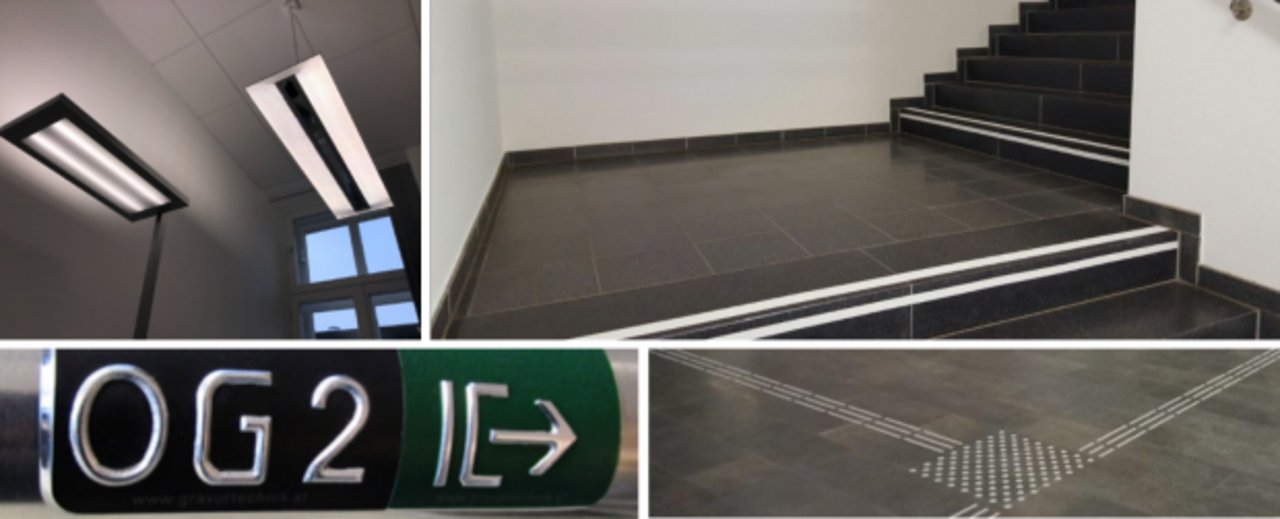You are here:
Physical and Environmental Accessibility
Accessibility in the built environment
Accessible construction, inclusive design and accessible facilities of buildings are a prerequisite for an inclusive society in which equal participation is possible for everyone. myAbility helps you sort through the jungle of standards and gives recommendations from the user's point of view.
How to build an accessible environment
myAbility’s aim is to ensure that people with disabilities can use objects and buildings independently and autonomously. Ramps, elevators and accessible toilets are just a few features in accessible buildings. Measures for physical and environmental accessibility are also required in the areas of orientation, auditory or haptic and visual perceptibility.
myAbility advises and supports companies in constructing or adapting buildings, taking into account the various standards, and uses an evaluation matrix to address the relevant individual target groups in their recommendations.
Our specialists offer advice and recommendations for all areas of a property. The aspects range from the exterior design (car parks, paths, playgrounds, etc.) to the parking garage, ramps, elevators, stairs and doors as well as topics related to orientation, flooring, operating elements, offices, lighting and the sanitary facilities. Furthermore, requirements in the areas of emergency alerts and building evacuation must also be considered.
Laws, guidelines and standards for accessibility in the built environment
Physical and environmental accessibility covers various areas and is addressed in a wide variety of regulations and legal texts. These include, among others, the following:
- Building regulations of the respective federal state
- Regulations for construction engineering of the federal states
- OBI Guideline 4 -- Safety of use and accessibility
- ÖNORM B 1600 – Accessible built environment -- Design principles
- ÖNORM B 1601 -- Design principles for accessible healthcare facilities, assistive housing and workplaces
- ÖNORM B 1602 -- Accessible educational institutions
- ÖNORM B 1603 -- Design principles for accessible facilities for tourism and leisure
- ÖNORM A 3011 – Graphic symbols for public information
- ÖNORM A 3012 -- Visual guiding system for public information
- ÖNORM V 2102 -- Tactile walking surface indicators (TWSI) - Technical aids for blind and partially sighted persons
- ÖNORM EN 81-70 -- Safety rules for the construction and installation of lifts - Particular applications for passenger and goods passenger lift - Part 70: Accessibility to lifts for persons including persons with disability
- OBI Guideline 2 – Safety in case of fire
- ISO/FDIS 2154 -- Building construction -- Accessibility and usability of the built environment
- BGBLA 2016 III 105 Convention on the Rights of Persons with Disabilities
- BGBI. I Nr. 82/2005 The Federal Disability Equality Act
Contact our advisor

Andreas Maierhofer (he/him)
Lead Wirtschaftsforum D-A-CH, Inclusive Business Development
call Andreas Maierhofer (he/him):+43 660 611 54 80
send mail to Andreas Maierhofer (he/him): andreas.maierhofer@myAbility.org
LinkedIn:amaierhofer